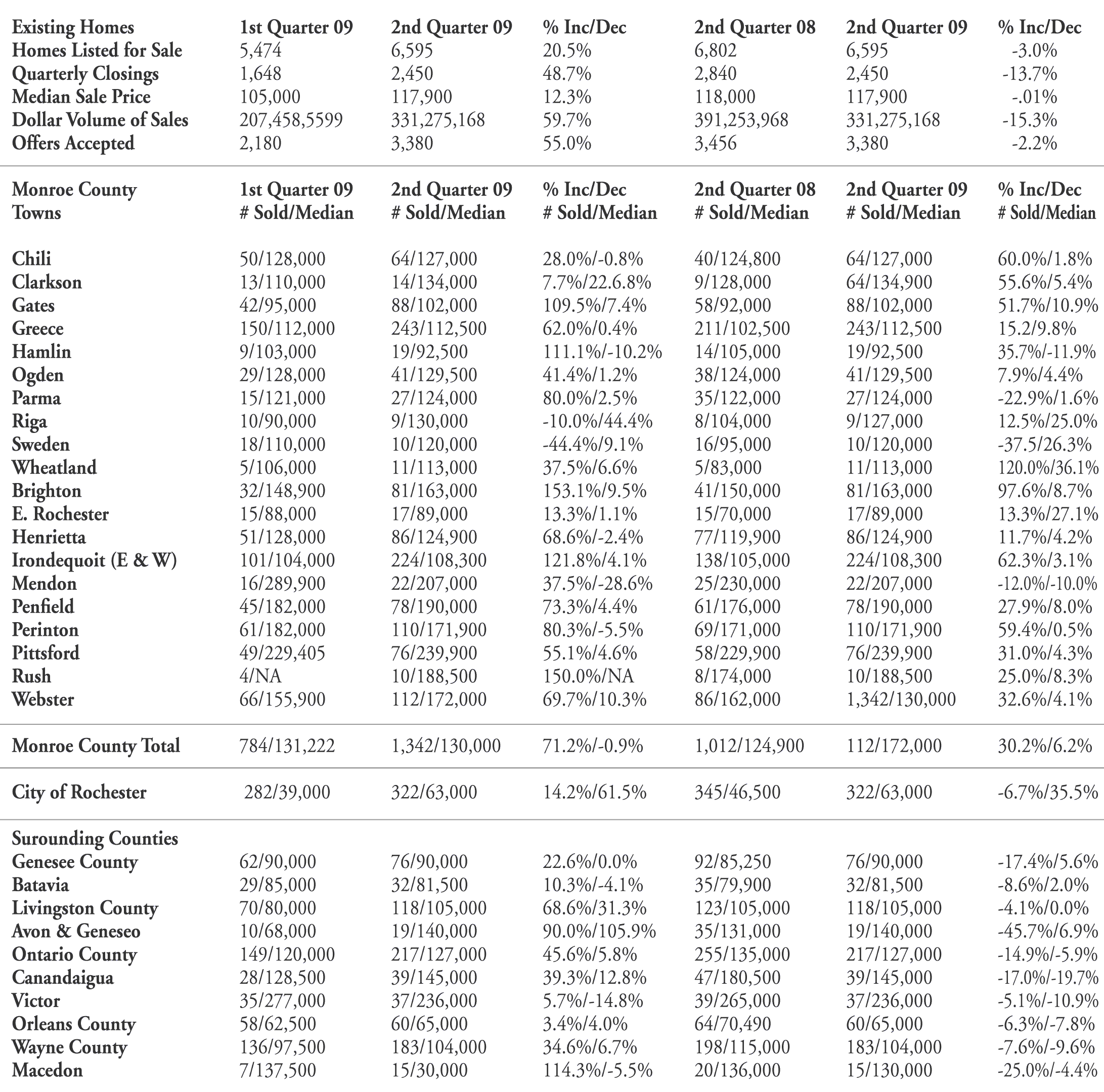In tough economic times, it is a natural for a Real Estate Agent’s attitude to waver. This market leads to confusion and lost focus. Should you make more calls, do more marketing, hold open houses, finally get to that project? What if none of those things work? Should you stay in the business? Can you afford to? These thoughts and the feelings they generate are a far more serious issue than the market and the problems that arise from the market.
You create what you focus on. Your focus creates your life. There are always opportunities in Real Estate. The Agents who looks for the opportunities find them, explore them and find ways to win. The Agents that look at the problems find those explore them and only see ways that limit their opportunities.
Focus creates feelings. The quality of our life is dictated by what we feel at any given moment. Focus creates your attitude. Do you control what you focus on and what you think about? Or do you allow outside influences, circumstances, and others reactions to dictate your focus which means that you, unnecessarily, give up control over your attitude and emotional state allowing outside influences to control the quality of your life?
Your Focus is the Key
Think about this. If a hostage is blindfolded, gagged and bound, in silence, what do they have left? All they have left are their thoughts and feelings. Through that experience, those thoughts and feelings completely dictate their quality of life. And how they manage those thoughts and feelings through that experience will largely dictate the quality of their life after it.
What you think about, you bring about. By managing what you think about, what you focus on you have power over your thoughts and their feelings.
This is true every day and every moment of your life. How you manage your focus will dictate your attitude. You can focus on things that make you strong and clear or focus on things that will diminish your quality of life.
Louise L. Hay, Author of “You Can Heal Your Life” says, “What we think about ourselves becomes the truth for us. Put another way, our subconscious mind accepts whatever we choose to believe. Then it reflects our beliefs in our lives. Many of us have foolish ideas about who we are. When we are very little, we learn how to feel about ourselves and about life by the reactions of the adults around us. When we grow up we have a tendency to re-recreate the emotional environment of our early home life.”
Our subconscious mind accepts whatever we choose to believe. You manage your attitude and your life by choosing the thoughts you focus on and hold in your mind. Choose empowering thoughts and you control the life you live. Allow disempowering thoughts and you lose control.
Focus Leads to Feelings
Focus leads to feelings. Control the focus and the feeling follows. You hear good news; good thoughts and good feelings follow. You hear bad news and bad feelings follow. Feelings follow focus, so control what you focus on and you control your feelings.
Focus, Meaning, and Physiology
Anthony Robbins, the famous motivator refers to this as your “state,” your emotional state of being. He teaches millions of people all over the world to control their state by controlling “what you focus on and the meaning you give it.” He adds a very important dimension to this. He adds physiology, which is what you do with your body.
Robbins says, “The source of all emotion is a pattern of physiology, how you use your physical body, focus, whatever you focus on, and meaning, words we put to an experience. Change any of these, physiology, focus or meaning and your (emotional) state changes.”
Most people do not make an effort to control their emotional state. Most people live with emotional states that disturb them. And they make no effort to change it, perhaps because they do not know that it is possible to change from sadness, frustration, fatigue and other negative emotional states to positive ones by changing focus, meaning and physiology.
The Secret
A popular DVD/book called “The Secret” focuses on the Law of Attraction. The narrator says, “By the images we hold in our mind we get and become what we think about most. What we think about we bring about.”
That is exactly what controls our attitude. What we think about (focus on) dictates the attitude we bring about.
It’s important to acknowledge that we cannot control the thoughts that pop into our minds. However, we can control whether we hold onto a thought, let it go, or replace it. We do not have to be controlled by the thought that popped into our mind but we are controlled by the thoughts we choose to hold there or allow to remain on our mind.
Habits and Practices
All this contributes to the way you create your attitude of success. The obvious goal is to fill your mind with the thoughts of what you desire. Fill your mind with belief in your confidence to live the life you desire, a life you love. And create the habit of catching negative, disempowering thoughts and replace them with positive, empowering thoughts. Here’s how.
You break an age old habit that is taught and reinforced by nearly everyone in our society. The age old habit is to focus on what to do. You go to bed each night and/or wake each morning and you shape your day around what you have to do. That focus will nearly always be frustrating. You may be asking what else is there to focus on?
The answer is to focus on what you want (not what you want to do), what you want to accomplish? What do you want to achieve? What do you want to create? Then focus on why you want those things. Once you are clear on what you want and why; your to do list becomes the vehicle instead of the goal, itself. Break the habit of the letting your day be dictated by your to do list. Instead let your day be led by what you want to achieve and why you want it. Your days will be more productive, more satisfying and more fulfilling.
Daily Affirmations and the What/Why Focus
Daily affirmations are the method to fill your mind with the exact thoughts that will empower your day. One of your daily affirmations may be remembering what you want and why you want it. For some, daily prayer is their focus and one set of thoughts that fill your mind. Other universal affirmations are; “I am completely capable.” “Money flows to me quickly and easily.” “I like myself unconditionally.” “I am loved and lovable.” “I deserve tremendous success.” Others may be specific; “I am earning two hundred thousand dollars this year.” “I am the number one Agent in my company.” “Seller’s are eager to hire me.” Or personal, “My family comes first.” “My work serves my life, not my life serving my work.”
As you repeat each affirmation or focus on what you want and why, take a moment to hold the image in your mind. Believe it is already yours. Hold the image long enough to actually feel that it is already accomplished. Experience that feeling. This is the actual practice of focusing on what you want, holding it in your mind and adding meaning to it. Results will come naturally. You don’t need to know how you will do a thing. Replace doubt with faith. Then your mind and heart are free to creatively come up with the best methods. Results naturally follow.
Physiology Again
As mentioned earlier, physiology is a main factor in your emotional state. As you experience your daily affirmations stand tall. If you feel like raising your arms toward the sky and letting the power of your faith flow through to you, raise them, smile and feel the glory of your success.
Physiology is a key to shifting your attitude. If you find your mind getting negative during the day, change your physiology. Go for a walk. Eat a piece of your favorite fruit. Simply stand up; clap your hands and begin thinking of your success; jump up and down, pump your fist. Feel the power of your successful future.
Physiology also includes exercise, diet, and sleep. When I see my thoughts go awry, or when I wake up and question my abilities or at some point in the day I find my mind losing belief in myself, the first questions I ask are, “Did I get enough sleep? Have I been exercising regularly? Did I miss meals or eat too much junk food recently?” Most often one of those is the reason. I commit to address the problem. That makes it easy to use positive physiology, focus and meaning to shift my attitude to positive.
In Summary
The most prescribed drugs in the United States are anti-depressants. Clinical depression is a debilitating disorder. At the same time most people are pretty normal when it comes to their attitude. It is perfectly normal to suffer from mild non-clinical depression. Many of my coaching clients who were in that state are now living happier more successful lives simply by employing the strategies above.
Reread the strategies above. Look at your goals, what you want and why. Set goals, or set new specific ones. Repeat your daily affirmations or create new ones. Start every day and focus each day on what you want and why. Make that a habit. Add physiology to your affirmations and change your physiology when your thoughts begin to sour. Look at your diet, exercise, and sleep habits. Make one small improvement. See its positive effect. Then make another.
With practice attitude shifts take no time at all. They happen in an instant. Make your next instant a powerful and positive one because you control it.
Rich Levin is a coach and speaker whose focus is teaching Agents to understand and control their business. Through that understanding achieve exceptional happiness and wealth in their life. Take control of your business, register for a 2009 Strategy Session.
Rich conducts a 15 minute webinar that will start your day with focus 1st Fifteen Training Webinar every week day morning. Rich is President of Rich Levin’s Success Corps Inc. Contact him at 585-244-2700 or rich@richlevin.com.








